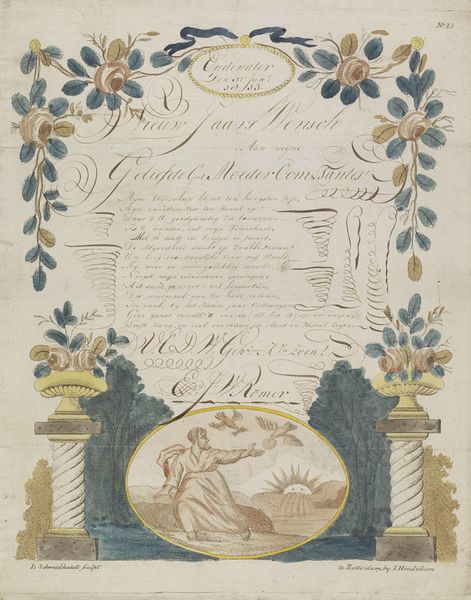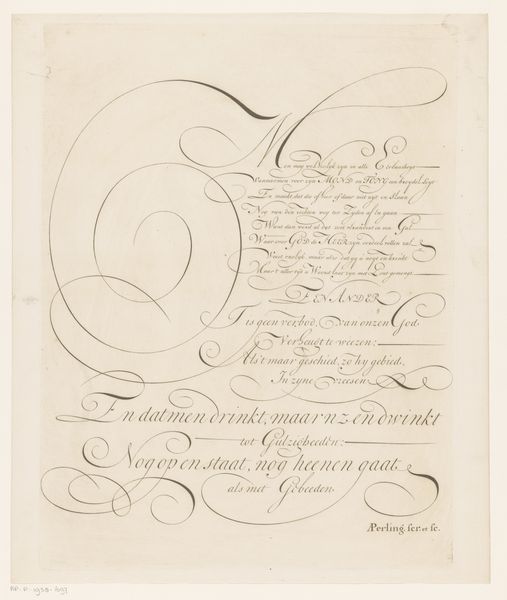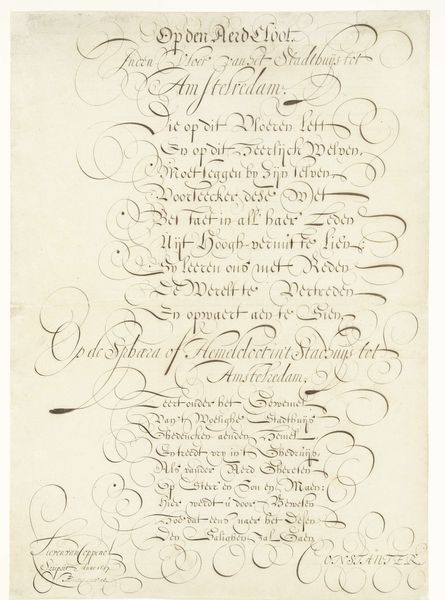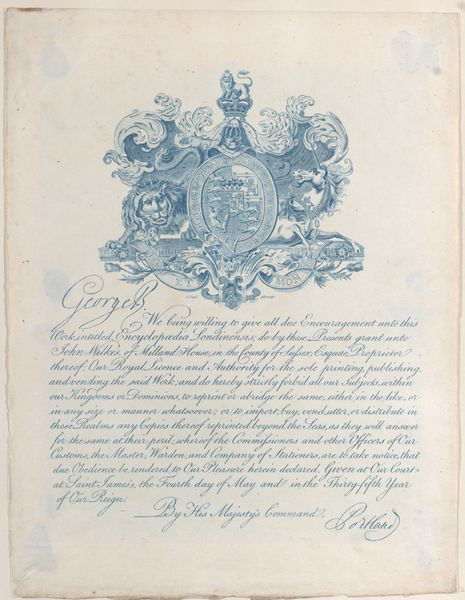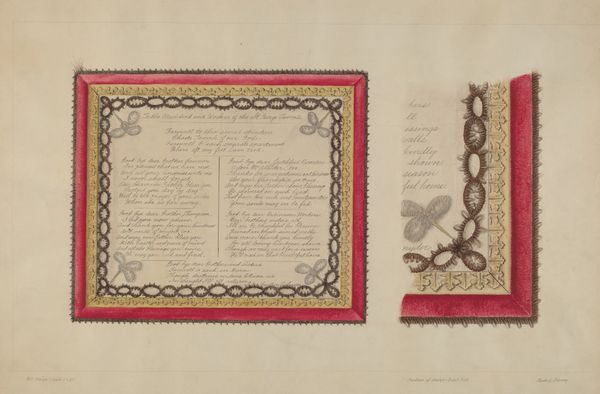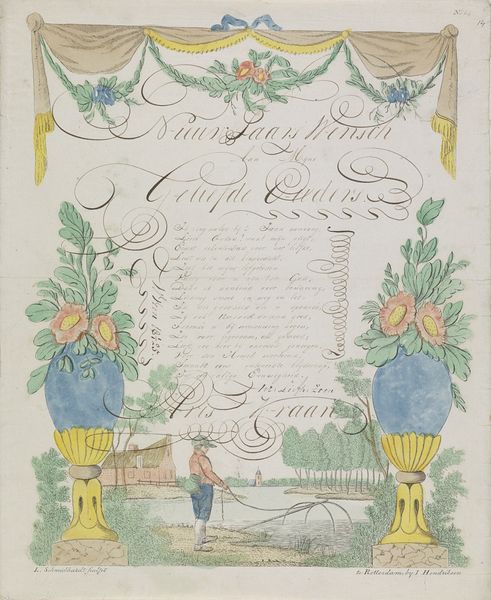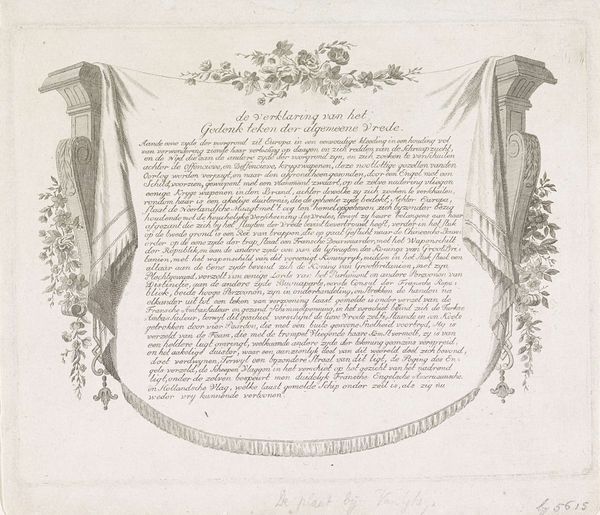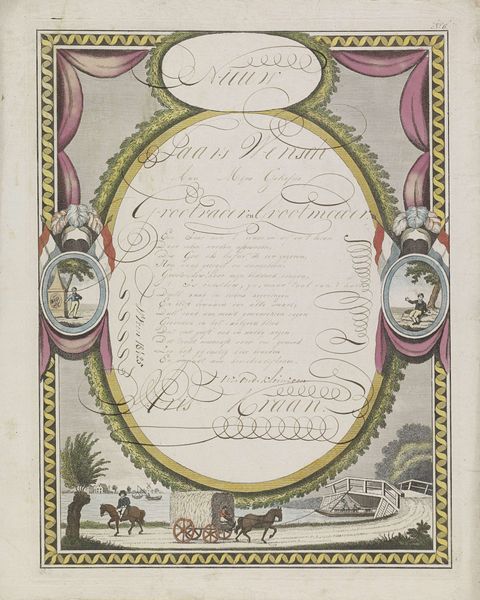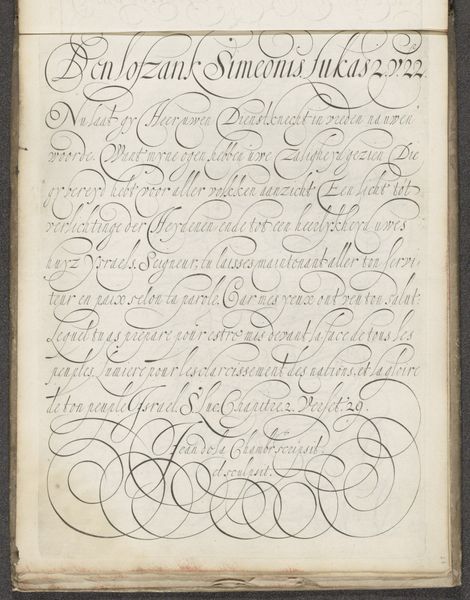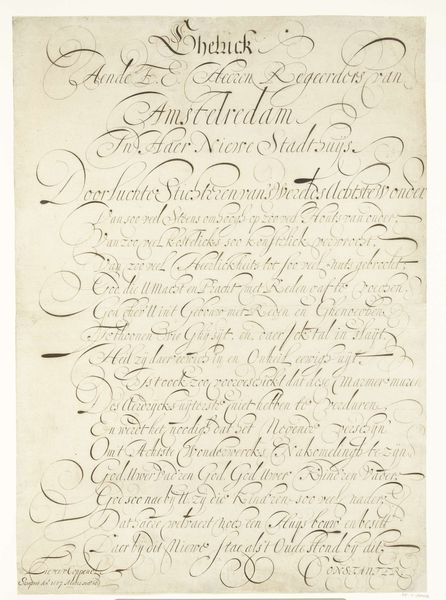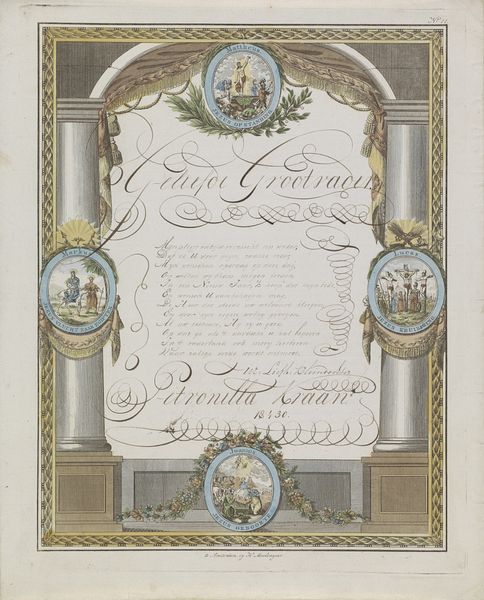
Nieuwe / jaar wensch / Aan mijne waarde / en zeer geliefde / tante / den 1 ste januarij 1837 1837
0:00
0:00
drawing, paper, watercolor, pen
#
portrait
#
drawing
#
paper
#
watercolor
#
romanticism
#
pen work
#
pen
#
watercolour illustration
#
genre-painting
#
miniature
#
watercolor
#
calligraphy
Dimensions: height 454 mm, width 382 mm
Copyright: Rijks Museum: Open Domain
Editor: Here we have a piece entitled "Nieuwe / jaar wensch / Aan mijne waarde / en zeer geliefde / tante / den 1 ste januarij 1837," created in 1837 by H.G. Alcken. It seems to be a pen, watercolor, and ink drawing on paper. My first impression is how the intricate calligraphy dances across the page; it almost feels like I'm looking at a musical score rather than a New Year's greeting. What do you see in this work? Curator: The interplay between the verbal and the visual here is critical. Note how Alcken uses line – the very substance of drawing – to perform a dual role. It is both the vehicle for textual communication and the foundational element in a complex decorative program. Observe how the linear quality of the calligraphy is echoed in the swirls and flourishes ornamenting the margins. Does this suggest any meaning, or relationship, between text and design? Editor: It does; the decorative elements emphasize the message within, like a visual echo. Is that what you mean? The wreaths and swirls amplify the feeling of celebration in the New Year's greeting. The penmanship is extremely skillful too! Curator: Precisely! Consider the function of line, not merely as contour but as texture, pattern, and even symbolic form. How might these swirling calligraphic forms, divorced from their linguistic function, be interpreted solely as visual objects? Can the romanticism expressed in the drawing tell us anything about family and society in that historical moment? Editor: That’s fascinating, focusing on the lines themselves opens up a completely different way of seeing it! I appreciate your thoughts on the interplay of design elements; it helps understand how it makes this piece unique and unified. Curator: Indeed. Formal analysis encourages close attention to the aesthetic choices the artist has made and how they structure meaning independently from social or cultural context.
Comments
No comments
Be the first to comment and join the conversation on the ultimate creative platform.
